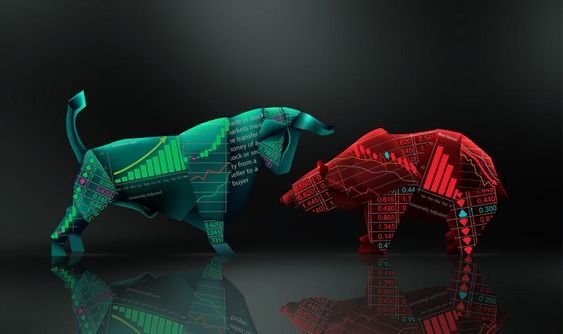The aluminum market plays a crucial role in the global economy, driven by its wide-ranging applications in industries such as automotive, construction, packaging, and aerospace. Understanding the price dynamics of aluminum requires both technical and fundamental analyses to provide a well-rounded perspective. This article delves into the key factors influencing aluminum stock prices as of today, offering a detailed exploration of market trends, technical indicators, and fundamental drivers.
Technical Analysis of Aluminum Prices
As of the latest data, aluminum prices closed at $2,561 per metric ton, reflecting an increase of $21 (0.83%) from the previous trading session. Here, we examine the technical indicators shaping the market:
Moving Averages (MAs):
- Short-Term (5-Day Moving Average):
- The 5-day simple moving average (SMA) stands at $2,565.60, slightly above the current price. This suggests a minor short-term downward trend, with prices dipping below recent averages.
- Medium-Term (20-Day Moving Average):
- The 20-day SMA is positioned at $2,552.60. The current price exceeding this average indicates a short-term bullish signal, reflecting potential upward momentum in the near term.
- Long-Term (200-Day Moving Average):
- The 200-day SMA is at $2,564.43, with the current price slightly below this level. This places the long-term trend in a neutral to mildly bearish zone, suggesting a cautious outlook for long-term investors.
Momentum Indicators:
- Relative Strength Index (RSI):
- The 14-day RSI is recorded at 56.235, well within the neutral range of 30-70. This indicates that the aluminum market is neither overbought nor oversold, signaling price stability in the short term.
- Moving Average Convergence Divergence (MACD):
- The MACD line is at 7.27, with a positive divergence over the signal line. This bullish crossover suggests upward momentum, which could lead to higher prices in the coming sessions.
Support and Resistance Levels:
- Support Levels:
- Immediate support is identified at $2,527. This level is likely to act as a cushion against downward price pressure, preventing significant declines.
- Resistance Levels:
- The next resistance level is at $2,577.50. A breakout above this level could attract further buying interest, pushing prices higher.
Volume Analysis:
- Trading volumes remain moderate, reflecting a balanced sentiment among market participants. A surge in volumes near resistance levels may indicate stronger conviction among buyers or sellers.
Fundamental Analysis of Aluminum Prices
Fundamental factors play a pivotal role in determining aluminum prices. These include supply-demand dynamics, production costs, global economic conditions, and geopolitical events. Let us explore these aspects in detail:
Global Supply and Demand Dynamics:
- Demand Drivers:
- Industrial Applications: Aluminum is extensively used in industries such as transportation, construction, packaging, and electrical manufacturing. Robust demand from these sectors, particularly in emerging markets like China and India, supports price stability.
- Green Energy Transition: The global push toward renewable energy and electric vehicles (EVs) has increased aluminum demand. Lightweight and durable, aluminum is a key material in EV manufacturing and renewable energy projects.
- Supply Constraints:
- Production Cuts: Geopolitical tensions, energy shortages, and environmental regulations have led to production curtailments in major aluminum-producing regions. These constraints tighten supply, providing upward pressure on prices.
- Inventory Levels: Declining inventory levels in major exchanges, such as the London Metal Exchange (LME), further exacerbate supply concerns.
Cost of Production:
- Energy Costs:
- Aluminum production is highly energy-intensive, making it vulnerable to fluctuations in energy prices. Rising energy costs increase production expenses, which are often passed on to consumers in the form of higher aluminum prices.
- Raw Material Availability:
- The availability of bauxite and alumina, key raw materials for aluminum production, significantly impacts costs. Disruptions in the supply chain can drive up production expenses, influencing market prices.
Macroeconomic Factors:
- Global Economic Growth:
- Economic growth directly impacts industrial demand for aluminum. Positive economic data, such as increased manufacturing activity and infrastructure spending, bolsters aluminum demand.
- Conversely, economic slowdowns or recessions dampen demand, leading to price declines.
- Geopolitical Events:
- Trade tensions, sanctions, and geopolitical conflicts can disrupt the aluminum supply chain, causing price volatility. Recent geopolitical developments in Europe and Asia have underscored aluminum’s sensitivity to such events.
Market Sentiment and Speculation:
- Investor Sentiment:
- Aluminum prices are heavily influenced by market sentiment. Bullish sentiment, driven by positive economic data or favorable policy announcements, often leads to price rallies.
- Bearish sentiment, fueled by uncertainty or adverse developments, can result in price corrections.
- Speculative Activity:
- Speculators play a significant role in aluminum pricing. High levels of speculative interest can amplify price movements, leading to increased volatility.
Key Trends and Insights
Regional Market Dynamics:
- China:
- As the world’s largest producer and consumer of aluminum, China exerts significant influence over global prices. Policy changes, such as production caps and environmental regulations, impact supply and demand dynamics.
- India:
- India’s growing industrial base and infrastructure development drive aluminum demand. Investments in renewable energy and EV production further support market growth.
- United States:
- In the U.S., aluminum demand is bolstered by construction, automotive, and aerospace industries. Import tariffs and domestic production levels also influence prices.
Emerging Technologies:
- Innovations in aluminum recycling and production efficiency are transforming the industry. Enhanced recycling methods reduce production costs and environmental impact, making aluminum more competitive.
Strategies for Traders and Investors
- Technical Trading Strategies:
- Use momentum indicators such as RSI and MACD to identify entry and exit points.
- Monitor support and resistance levels for potential breakouts or reversals.
- Analyze trading volumes to gauge market sentiment and conviction.
- Fundamental Investment Strategies:
- Focus on long-term demand trends, such as the green energy transition and infrastructure growth.
- Monitor supply-side developments, including production cuts and raw material availability.
- Stay informed about macroeconomic indicators and geopolitical events.
- Risk Management:
- Diversify investments across commodities and sectors to mitigate risks.
- Use stop-loss orders to protect against adverse price movements.
- Regularly review and adjust portfolios based on market conditions.
Conclusion
The aluminum market remains a dynamic space, influenced by a complex interplay of technical and fundamental factors. Technical analysis highlights key price levels and momentum indicators, offering insights into short-term trends. Meanwhile, fundamental analysis sheds light on the broader economic and geopolitical forces shaping aluminum prices.
As of today, aluminum prices exhibit a neutral to slightly bullish outlook, supported by stable demand and supply-side constraints. However, traders and investors must remain vigilant, as market conditions can change rapidly. By combining technical expertise with a deep understanding of fundamental drivers, market participants can navigate the aluminum market effectively, capitalizing on opportunities while mitigating risks.




